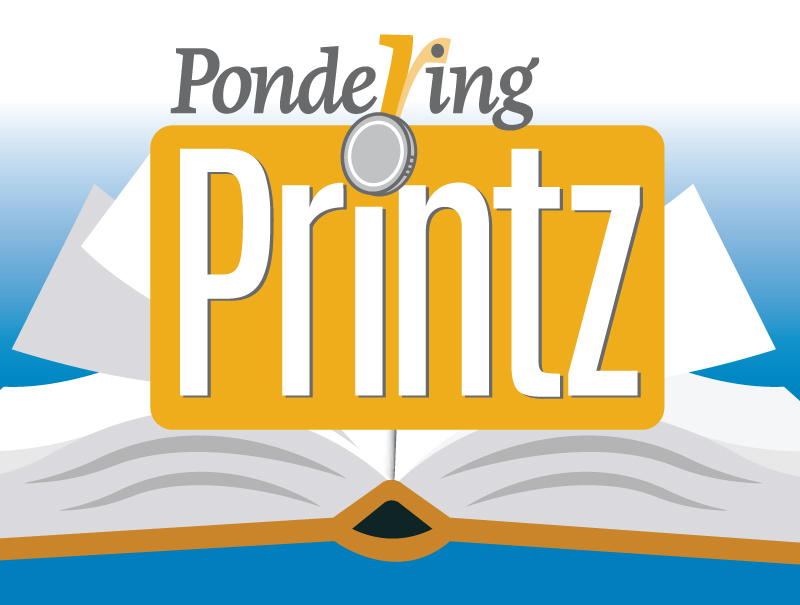Dad’s Camera
Dad’s Camera
Written by Ross Watkins, Illustrated by Liz Anelli
First US Edition, Candlewick Press, 2018
Originally Published as One Photo by Penguin Random House Australia, 2016
ISBN: 978-1-5362-0138-3
Book Review
In this touching and quiet picture book, we learn about a father living with Alzheimer’s Disease through the eyes of his son: “Dad started doing more funny things, like putting things that belonged in the fridge in the cupboard and things that belonged in the cupboard in the fridge.” Dad also gets a 35-millimeter camera and starts taking pictures of objects around the house, but not “the regular things people photograph,” and not the protagonist and his mother. This becomes a point of conflict. Sometimes the protagonist and his mom are able to be patient. Sometimes, Mom gets angry. Sometimes, they all cry. Never once is the father’s illness named specifically. The author and illustrator deftly deal with Dad’s death, revealing an empty room, curtains blowing in the breeze, a cabinet with frames atop, seen in reality and in shadow, and the simple words: “Then we lost Dad.” Soon, a package arrives, containing Dad’s camera and just one picture: a photograph of a portrait of the protagonist and his parents. With this parting gift, the protagonist and his mother finally understand Dad’s actions, realizing that he wasn’t taking pictures to help him remember things: “Dad took photos of the things he wanted us to remember…about him.” Anelli’s collage, monoprint, watercolor, and acrylic illustrations, colored digitally, offer readers a sense of safety and security, coziness and comfort, amidst the sadness. This beautiful book is ideal for read aloud, for explorations of family dynamics, Alzheimer’s Disease, and the ways that photographs can illuminate both the most mundane and the most powerful elements of our family lives.
Teaching Ideas and Invitations
Pre-Reading with End Pages. Before you read the book aloud to your class, have your students explore the front and back end pages. How are they similar to one another? How are they different? What stories might they tell? Once you are finished with the book, have students explore the front and back end pages again. How do they read those end pages differently? What new insight do they gain? When students are next publishing their own writing of any genre, remind them of these and other end pages, and encourage students to make full use of them in their own work. For middle grade students, have them create end pages for the novels or nonfiction chapter books that they read. This is a way for them to synthesize the big ideas and themes of those larger works, in a manner that is individual and unique to them. They can create their own illustrations, create collages with primary sources, etc., or use actual photographs.
ADVERTISEMENT
ADVERTISEMENT
Reading Across Continents. Ross Watkins, the author of Dad’s Camera, lives in Queensland, Australia. Liz Anelli, the illustrator for the book, lives in New South Wales, Australia. Using their websites below, as well as the WorldCat Library, see if you can find any of their other books there in the United States. Share these books with your class. How are their other titles similar to and different from Dad’s Camera? What can you learn or infer about life in Australia by reading these books? Talk to your students about what they gain by reading books written and illustrated by authors and illustrators in other countries. Next, have your students select other countries from which they would like to read original contemporary or canonical children’s literature. You could start immediately by using the International Children’s Digital Library.
Exploring the World with “Old” Cameras. Your students are likely not familiar with “old” cameras that require film. Borrow an old 35 millimeter camera or buy one from a thrift store or online site like eBay, and purchase several roles of film (enough for each student to take a certain number of pictures). First, let students explore the camera. How do they see the different parts working together? How is it similar and different from today’s cameras? How is it similar and different from the cameras on today’s phones? Provide students with the opportunity to take pictures using the camera. Allow each student a certain number of shots, and then send the film away for development (a CVS Pharmacy or local photo store may be of service, or an online services such as The Darkroom). When students get their pictures back, have them explore the differences from one picture to another. Perhaps make a collage of the pictures and share them on the wall outside your classroom, with student writing about the experience.
Exploring Adjectives and the Protagonist. After reading the book, ask your students what we know and don’t know about the main protagonist who tells the story. As discussed in the book review, the author never directly tells the reader what Dad suffers from. It’s up to the reader to put it together. As part – but not the only part of exploring this sensitive book – talk to your students about the ways in which they infer between the words, the pictures, and their own thinking to come up with ideas about Dad’s illness. What can students tell from what he tells us through narration? What is revealed through the pictures throughout the book and then in photos in the back end pages? What does the protagonist like to do? Ultimately, ask your students to notice how the protagonist observes and interacts with his father throughout his father’s illness. Make a list of the adjectives the students would use to describe the protagonist. If the students themselves don’t notice it, you might want to bring attention to the fact that even when the protagonist thinks his father is forgetting about him and his mom, he still hugs him.
Photo Essay: Documenting a “Day in the Life.” Throughout the book, we see Dad documenting his everyday life with pictures: a cup of coffee, a bowl of cereal, the fire in the woodstove. How would your students document their lives? Provide your students with access to cameras. This may mean buying disposable cameras for your students, or checking with family to make sure that someone has a phone that can take pictures and email them to you or upload them to the Cloud. Have your students document their day from start to finish by taking pictures. But, as the book says, remember that “Dad didn’t take photos of the regular things people photograph.” Have your students brainstorm together the “non-regular” things that they can photograph. Once the students have completed their pictures and uploaded them, have each student select a certain number of pictures to create a visual narrative of their everyday life. Have them create books or print and then frame their photos (even using black construction paper as a frame) as a visual display. If choosing a visual display, connect with your local library or a local gallery to see if you can have the students’ work on exhibit. Have students write a process piece about why they selected the pictures that they did. Why did the leave out certain pictures? What did they want to share about their lives with others? Some students may not be able to abstract in this way, though some will without realizing it or being able to “label” it as such. In all cases, their selections speak for themselves as a composition.
Holding Onto Memories. What are some of the ways that your students remember? What are their special mementos? What memories do they hold? Have students bring in an artifact that represents a special memory. Have them share their special memories with one another. Next, have them turn that special memory into a card for the people with whom they share the memory. Have students create original greeting cards with an illustration of the special memory, and have them write a special message to their loved one(s). If those loved ones have passed on, talk about the ways that they can still share the card, such as putting in a special place at home, or at a cemetery, etc. To complement this exploration, you might also want to read The Matchbox Diary with students.
Grades 4 and Up
Duet: Dad’s Camera and Merci Suárez Changes Gears. Have students read Dad’s Camera before engaging with the novel Merci Suárez Changes Gears. Use Dad’s Camera as a scaffold to start to talk about living with someone with Alzheimer’s. While doing so “gives away” the fact that Merci’s grandfather is suffering from the disease, it will gives your students a more specific lens with which to explore family dynamics in the wake of the disease, comparing and contrasting the ways in which the family of three copes with it in Dad’s Camera versus the extended family in Merci Suárez Changes Gears.
Critical Literacy
Understanding of and Advocacy about Alzheimer’s. What do your students know about Alzheimer’s? You may already be aware of students with family members suffering from the disease. If not, you can ask if anyone knows someone who is living with the disease, or if they knew someone with the disease. Provide students the opportunity to explore some of the sources below. After students have learned more about the disease, its symptoms, and the available treatments to delay its impact, have them think of a service learning project that they can do to either better inform people about the early symptoms of Alzheimer’s, or ways that they can support community members and their families who may be coping with the disease. NOTE: This was a teaching idea was originally posted with our recent entry for Merci Suárez Changes Gears.
Further Explorations
Online Resources
Ross Watkins, Official Website
One Photo Book Trailer (original title in Australia)
National Institute on Aging, NIH, Alzheimer’s Disease Fact Sheet
Resources for Children and Teens About Alzheimer’s Disease
International Children’s Digital Library
Books
Fleischman, P. (2013). The matchbox diary. Candlewick.
Medina, M. (2018). Merci Suárez changes gears. Candlewick.
Rosenstock, B. (2016). Dorothea’s eyes: Dorothea Lange photographs the truth. Calkins Creek.
Stoddard, L. (2018). Just like Jackie. Harper Collins.
Weatherford, C.B. (2017). Dorothea Lange: The photographer who found the faces of the Depression. Albert Whitman.
Filed under: Fiction Picture Books
About Mary Ann Cappiello
Mary Ann is a professor of language and literacy at Lesley University. A former public school language arts and humanities teacher, she is a passionate advocate for and commentator on children’s books. Mary Ann is the co-author of Teaching with Text Sets (2013) and Teaching to Complexity (2015) and Text Sets in Action: Pathways Through Content Area Literacy (Stenhouse, 2021). She has been a guest on public radio and a consultant to public television. From 2015-2018, Mary Ann was a member of the National Council of Teachers of English's Orbis Pictus Award for Outstanding Nonfiction (K-8) Committee, serving two years as chair.
ADVERTISEMENT
ADVERTISEMENT
SLJ Blog Network
2024 Books from Pura Belpré Winners
In Memorium: The Great Étienne Delessert Passes Away
Winnie-The-Pooh | Review
Parsing Religion in Public Schools
Finding My Own Team Canteen, a cover reveal and guest post by Amalie Jahn
ADVERTISEMENT








